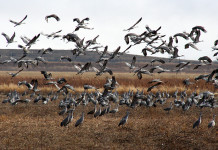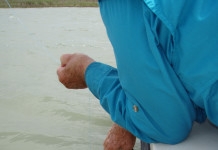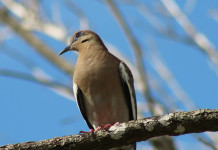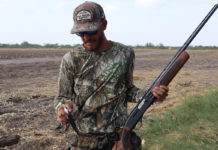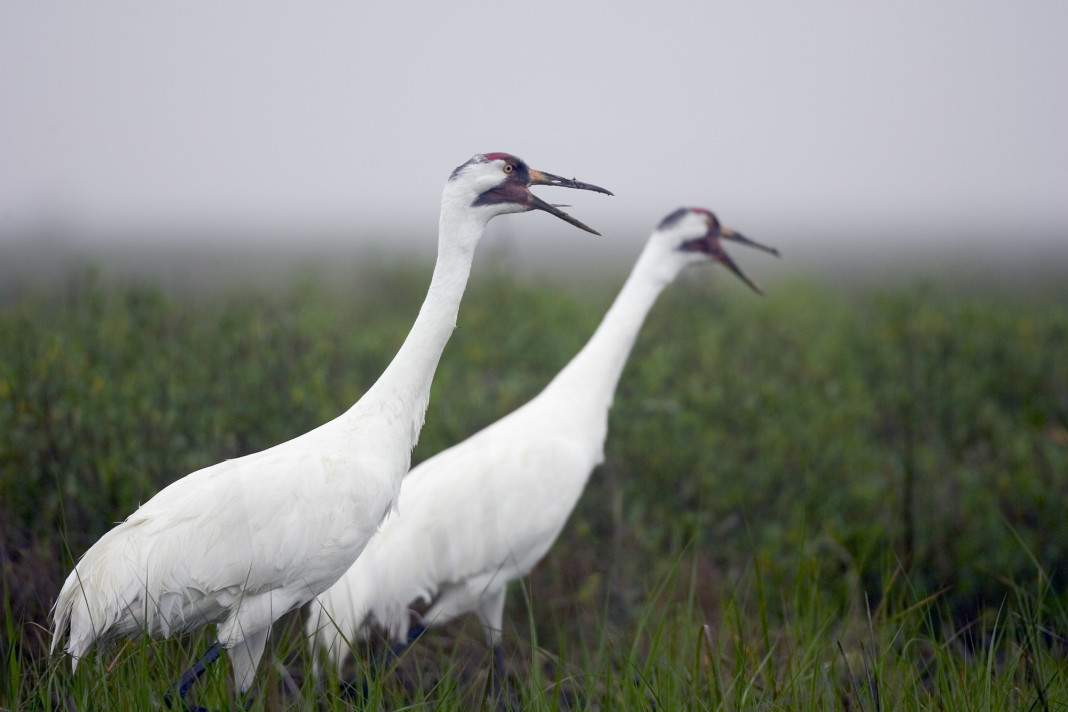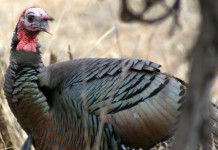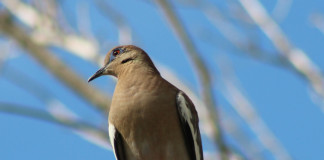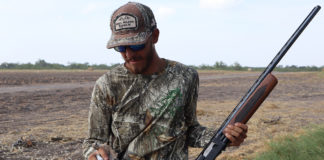Louisiana Department of Wildlife and Fisheries Enforcement Division agents and U.S. Fish and Wildlife Service officials are investigating after a whooping crane was found shot to death in Red River Parish, northeast of Toledo Bend Reservoir and the Texas border.
The whooping crane was found and recovered from the bank of the Red River about two miles northwest of Loggy Bayou on April 16. After a necropsy of the crane, it was determined that the endangered bird was shot with a 6.5mm/.264 caliber projectile.
Investigators believe the bird was shot between April 10 and April 14. The crane was a part of LDWF’s whooping crane reintroduction program and was fitted with a GPS tracking device. The last tracking point of the crane moving was April 10 near where it was found dead April 16. The last tracking point received was April 14 at the location the bird was found.
This whooping crane was released in Louisiana on March 14, 2011.
LDWF’s Operation Game Thief program, the Louisiana Wildlife and Fisheries Foundation and the USFWS are each offering as much as $1,000 in rewards for information about the illegal shooting that leads to an arrest. To report any information regarding this whooping crane shooting, please call 1-800-442-2511.
“Anytime we lose one of these cranes it sets us back in our efforts to restore the whooping crane population back to its historic levels in Louisiana,” said LDWF Secretary Robert Barham, in a news release. “These were once native birds to Louisiana and the department would like to see these cranes thrive again in the future with a sustainable population.”
LDWF has released 40 whooping cranes since 2011 and has 25 cranes it is tracking. This is the third crane that has been found shot with the previous two having been shot in Jefferson Davis Parish in October 2011.
In January, a Dallas hunter pleaded guilty to one count of violating the Migratory Bird Treaty Act after he shot and killed a juvenile whooping crane near St. Joseph Island along the Texas coast.
The reintroduced cranes came from the U.S. Geological Survey Patuxent Wildlife Research Center in Laurel, Md., and they were placed in the coastal marsh of Vermilion Parish within LDWF’s White Lake Wetlands Conservation Area. This reintroduced population marked the first presence of whooping cranes in the wild in Louisiana since 1950.
LDWF is working cooperatively with the USFWS, USGS, the International Crane Foundation and the Louisiana Cooperative Fish and Wildlife Research Unit to bring the species back to the state. This non-migratory flock of whooping cranes is designated as a non-essential, experimental population but is protected under state law, the Endangered Species Act and the Migratory Bird Treaty Act.
Whooping cranes, the most endangered of all of the world’s crane species, were first added to the federal status of an endangered species on March 11, 1967.
Historically, a resident and migratory population of whooping cranes were present in Louisiana through the early 1940s. Whooping cranes inhabited the marshes and ridges of the state’s southwest Chenier Coastal Plain, as well as the uplands of prairie terrace habitat to the north. Within this area, whooping cranes used three major habitats: tall grass prairie, freshwater marsh, and brackish/salt marsh. The Louisiana crane population was not able to withstand the pressure of human encroachment, primarily the conversion of nesting habitat to agricultural acreage, as well as hunting and specimen collection, which also occurred across North America. The last bird in southwest Louisiana was removed to a sanctuary in 1950.
The only self-sustaining wild population of whooping cranes migrates between Wood Buffalo National Park in the Northwest Territories of Canada and the Aransas National Wildlife Refuge in Texas. Multiple efforts are under way to bring this bird further along its path to recovery. This includes increasing populations in the wild, ongoing efforts to establish a migratory population in the eastern United States, and establishing a resident population in Louisiana.
There are about 600 whooping cranes left in the world with 421 of those living in the wild.


